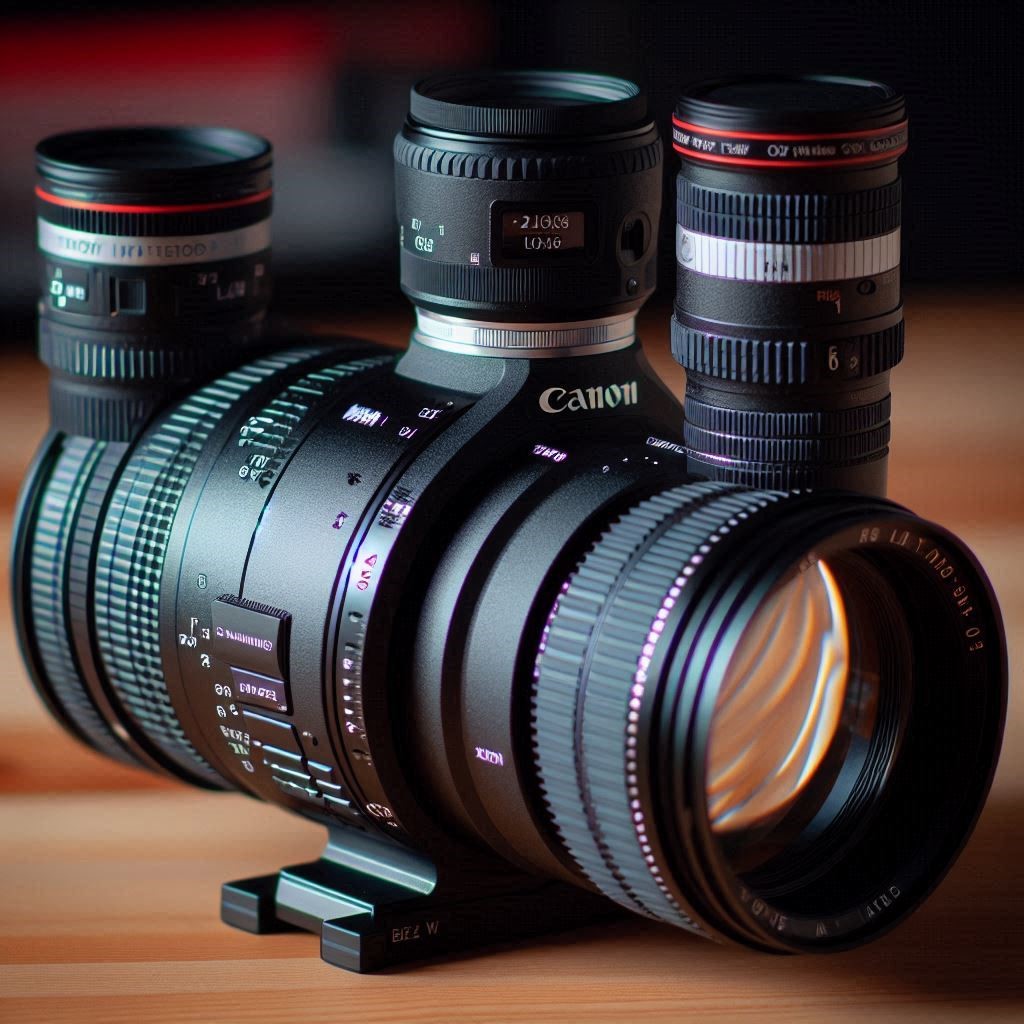Introduction to Astrophotography
Astrophotography opens up a world of wonder and discovery. The night sky, filled with stars, planets, and galaxies, beckons to those who want to capture its beauty. For photography enthusiasts equipped with a Canon EOS 20D, the right tools can elevate your celestial images from ordinary snapshots to breathtaking works of art.
Imagine pairing your DSLR with telescope lenses designed for detailed astronomical observation. This combination transforms your camera into a powerful instrument for exploring the universe. But how do you bridge the gap between these two worlds? Enter the Canon EOS 20D adapter to 2 telescope lenses—a game-changer in astrophotography that allows you to unlock new levels of creativity.
Whether you’re an experienced astrophotographer or just starting out on this starry journey, understanding how to use this adapter effectively will enhance your photographic skills and deepen your connection with the cosmos. Let’s dive deeper into what makes this pairing so essential for capturing stunning images of distant celestial bodies!
The Importance of Camera Adapters
Camera adapters play a crucial role in astrophotography. They act as the bridge between your camera and telescope, allowing for seamless integration.
Using an adapter ensures that you can harness the full potential of both devices. This connection is essential for capturing crisp images of celestial bodies, from distant galaxies to nearby planets.
Without a proper adapter, you risk losing clarity and detail in your shots. The right fit helps to align optical elements accurately, ensuring optimal performance.
Moreover, adapters come in various designs tailored to different telescopes and cameras. Selecting one specific to your setup enhances versatility and expands your creative options.
Investing in a quality camera adapter ultimately elevates your astrophotography experience. It opens up new possibilities for exploration under the night sky while maximizing image quality every time you shoot.
Understanding the Canon EOS 20D
The Canon EOS 20D is a remarkable DSLR, renowned for its reliability and performance. Launched in 2004, it quickly became a favorite among amateur and semi-professional photographers.
With an APS-C size sensor at 8.2 megapixels, it captures stunningly detailed images even in low-light conditions—essential for astrophotography. The camera’s DIGIC II image processor enhances speed, allowing rapid shooting bursts that are crucial when targeting fleeting celestial events.
Its user-friendly interface makes navigating settings easy for beginners while still offering advanced options for seasoned photographers. Plus, the robust build quality ensures durability during outdoor adventures under the night sky.
Compatibility with various lenses adds versatility to your photography toolkit. Whether you’re using standard or specialized telescope lenses, the EOS 20D provides excellent adaptability to capture breathtaking cosmic views.
Types of Telescope Lenses and their Uses
Telescope lenses come in various types, each designed for specific applications. Refractor telescopes use glass optics to gather light and provide clear images of celestial bodies. They excel at planetary observation and are great for beginners.
Reflector telescopes utilize mirrors instead of lenses. This design allows larger apertures while keeping the setup more affordable. They’re ideal for deep-sky imaging, capturing faint objects like galaxies and nebulae.
Catadioptric systems combine both lenses and mirrors. These versatile instruments offer compact designs with excellent image quality, making them suitable for astrophotography enthusiasts who want a portable solution.
Wide-field eyepieces enhance your viewing experience by providing expansive views of the night sky. They’re perfect for star parties or anyone eager to explore vast constellations without constant adjustments.
Choosing the right lens is essential based on what you wish to observe or photograph in our universe’s vast expanse.
Choosing the Right Adapter for your Telescope
Choosing the right adapter for your telescope is crucial for a successful astrophotography experience. It’s essential to ensure compatibility between your Canon EOS 20D and the specific telescope lenses you intend to use.
Start by checking the thread size of your telescope’s eyepiece or focuser. This will help you identify which adapters are suitable. Look out for T-adapters that fit securely onto both the camera and telescope.
Consider the focal length of your telescopes as well. Different lenses provide varying levels of magnification, affecting how images appear.
Also, think about whether you’ll need an additional extension tube or reducer; these can enhance versatility depending on what celestial objects you’re photographing.
Don’t forget about build quality — durable materials can make a difference in performance during those long night sessions under the stars.
Step-by-Step Guide on Using the Adapter with your Canon EOS 20D
Start by gathering your equipment. You’ll need the Canon EOS 20D, the chosen telescope lens, and of course, your adapter. Make sure everything is clean to avoid any dust on your images.
Next, attach the adapter to the camera’s body. Align it carefully and twist gently until it clicks into place. This ensures a secure fit for optimal image quality.
Now it’s time to connect your telescope lens to the adapter. Line up the mounting points and lock them in securely. A solid connection is crucial for stability during astrophotography sessions.
Adjust settings on your Canon EOS 20D according to lighting conditions. Experiment with ISO levels and shutter speeds for different celestial objects.
Don’t forget about focusing! Use manual focus for precision when aiming at stars or planets through your telescope lens. Take some test shots before diving deep into capturing stunning night sky photographs.
Tips for Capturing Stunning Images of the Universe
Capturing stunning images of the universe requires a blend of skill, patience, and technique. Start by selecting a location far from city lights to reduce light pollution. A clear night sky is essential for astrophotography.
Use manual settings on your Canon EOS 20D. Set a low ISO to minimize noise while allowing more light in through longer exposure times. Experiment with aperture settings; wider apertures can enhance star visibility.
Consider using tracking mounts to follow celestial objects as they move across the sky. This will help prevent blurriness caused by Earth’s rotation during long exposures.
Don’t forget about post-processing! Software like Adobe Lightroom or Photoshop can elevate your images by enhancing colors and correcting any imperfections that may arise during capture.
Common Mistakes to Avoid in Astrophotography
Astrophotography can be a rewarding endeavor, but it’s easy to make mistakes. One common error is not accounting for light pollution. Urban areas are filled with artificial lights that wash out celestial details. Finding a dark sky location significantly enhances your images.
Another frequent oversight involves exposure settings. Many beginners either underexpose or overexpose their shots, losing essential star details. Experimenting with different exposures will help you find the right balance.
Ignoring focus is another mistake people often make. Stars must be sharp and well-defined in astrophotography; using manual focus instead of autofocus can yield better results.
Neglecting post-processing limits your final image quality. Basic editing techniques can enhance colors and contrast, bringing out hidden features in your photographs that capture the beauty of the night sky.
How to Connect Canon EOS 20D Adapter to 2 Telescope Lenses
Connecting your Canon EOS 20D to two telescope lenses opens up a world of possibilities in astrophotography. Start by securely attaching the adapter to your camera body. Ensure that you align it carefully, so no light leaks occur.
Next, select one of your telescope lenses. Gently screw or slide the lens onto the adapter until it’s snug and secure. If you’re using a second lens, repeat this process with care.
It’s crucial to check for any wobbling or instability once both are attached. Adjustments may be necessary for optimal alignment.
Before heading out into the night sky, familiarize yourself with focus adjustments on each lens. This will save time during those precious moments when celestial wonders appear.
Once connected properly, keep an eye on your settings to ensure they’re optimized for low-light photography.
Exploring the Stars: Canon EOS 20D Adapter to 2 Telescope Lenses
The night sky is a vast canvas waiting for your lens to capture its wonders. With the Canon EOS 20D, accessing this celestial beauty becomes easier with an adapter designed specifically for telescope lenses.
Imagine peering through your scope and noticing intricate details of distant galaxies or bright star clusters that can leave you in awe. The right adapter opens up new possibilities, allowing two different telescope lenses to be mounted seamlessly on your camera.
This dual-lens option enhances versatility. You can switch between wide-field views and zoomed-in shots without interrupting the flow of your stargazing session. Each lens brings unique perspectives, revealing aspects of the universe you’ve never seen before.
Astrophotography isn’t just about capturing images; it’s about documenting experiences. With proper setup and technique, every click can transport you deeper into space’s mysteries.

Why You Need a Canon EOS 20D Adapter to 2 Telescope Lenses for Night Sky Photography
Night sky photography opens up a world of possibilities, transforming the way we perceive our universe. The Canon EOS 20D adapter to 2 telescope lenses is not just an accessory; it’s essential for serious astrophotographers. This versatile setup allows you to combine the powerful capabilities of your DSLR with specialized telescope optics.
With this adapter, you can capture stunning details in celestial objects that standard camera lenses simply cannot reach. Whether you’re aiming to photograph distant galaxies or intricate star clusters, having access to two different telescope lenses expands your creative options significantly. You gain flexibility in focal lengths and magnification power, allowing for diverse compositions.
Moreover, using a Canon EOS 20D combined with telescope lenses enhances light gathering ability and clarity. These features are particularly important when photographing dim celestial bodies or during less-than-ideal lighting conditions. It also accommodates various types of astrophotography—from wide-field shots capturing expansive nightscapes to detailed close-ups revealing the beauty of lunar craters.
Investing in an adapter is investing in quality results and unforgettable experiences under the stars. Embrace this tool as part of your astrophotography journey and see how it changes your perspective on capturing the cosmos above us!










